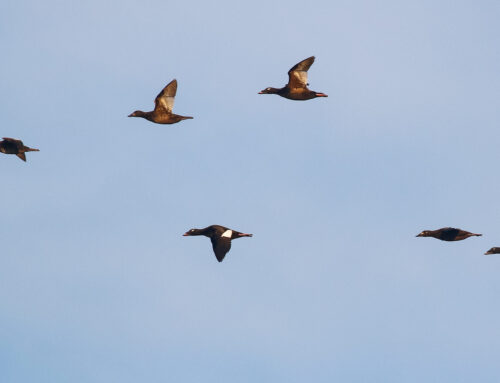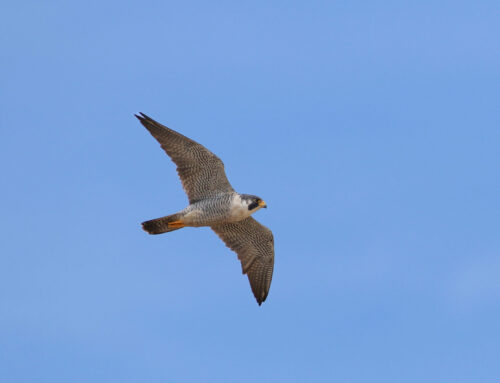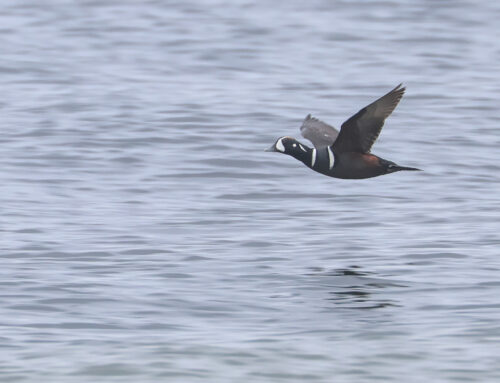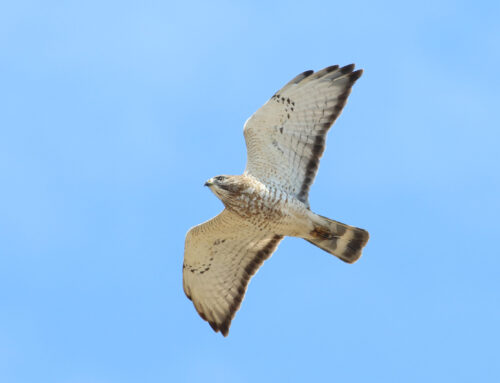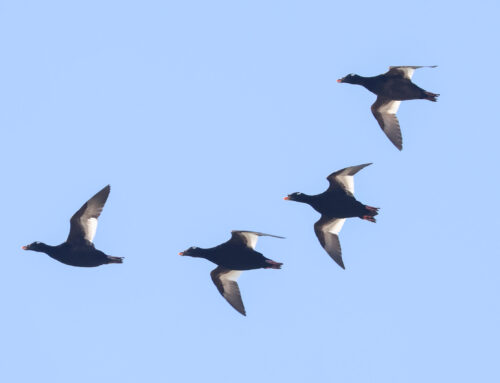The right winds in early October usher Whitefish’s peak Aythya (certain diving ducks like scaup and Redhead) flight past the Point, and yesterday, the 7th, was fun. For most of the count, each time I looked to the northwest, a new duck flock had sprung the gate and was rapidly traversing the zone of easy identifications. (This is bounded by zones of pixelation and bad light…). There is a limited time to make sense of these groupings: to identify and count and to seek out the slightly smaller, duller-winged Ring-necked Duck in the thick of the balling scaup…
For much of yesterday’s count, the only conversation at the waterbird shack was something like “flock! Coming out of the dune…high. Moving fast.” Sometimes, the identifications came quickly: “two birds…low, left of High Hills…dark-winged scoters…Surfs.” This freed the mind and scope to work on the next flock. Sometimes, the identifications did happen like this–or at all, for that matter. “20 birds…Aythya…I think I see a wingstripe…maybe not… …unidentified Aythya, I guess.” And then, we’d have to give it up, get on the next flock before it entered the zone of pixelation…
I really love days like these out on the Point, when there are mixed flocks to work through; birds to catch before they disappear. This situation has been a scarce resource, lately: strong south winds have scuppered most migration–the adverse winds at times seem unending. When I check the forecast, the south winds persist for many days; at the Point, the south winds spawn deep explorations of using time. (My latest, on the worst days, has been counting how many scope scans I can make before finding a new bird. It stands at over a dozen, which I feel should be criminal in early October!) Yesterday’s flight was a much-needed respite; here’s to hoping more like it (and a passerine vagrant!) are on deck.
There was nothing dramatically unexpected this last week at the waterbird count. Aside from yesterday’s flight, where the most numerous species were American Wigeon (372) and scaup (808; the majority of these were greater, but there were some Lesser and more than a few that went unidentified to species!), we did have large Canada Goose flights on 1 October (1445) and 2 October (1020); mixed with these were the fall’s first Cackling Geese (4 on 1 and 2 October), and 3 distant Snow/Ross’s Geese on 2 October.
Other birds of note were a late Short-billed Dowitcher on 1 October, and on 4 October, a distant juvenile jaeger, our season’s first Black Scoters, and a Black-backed Woodpecker.
–Alison Vilag, WPBO Waterbird Counter

